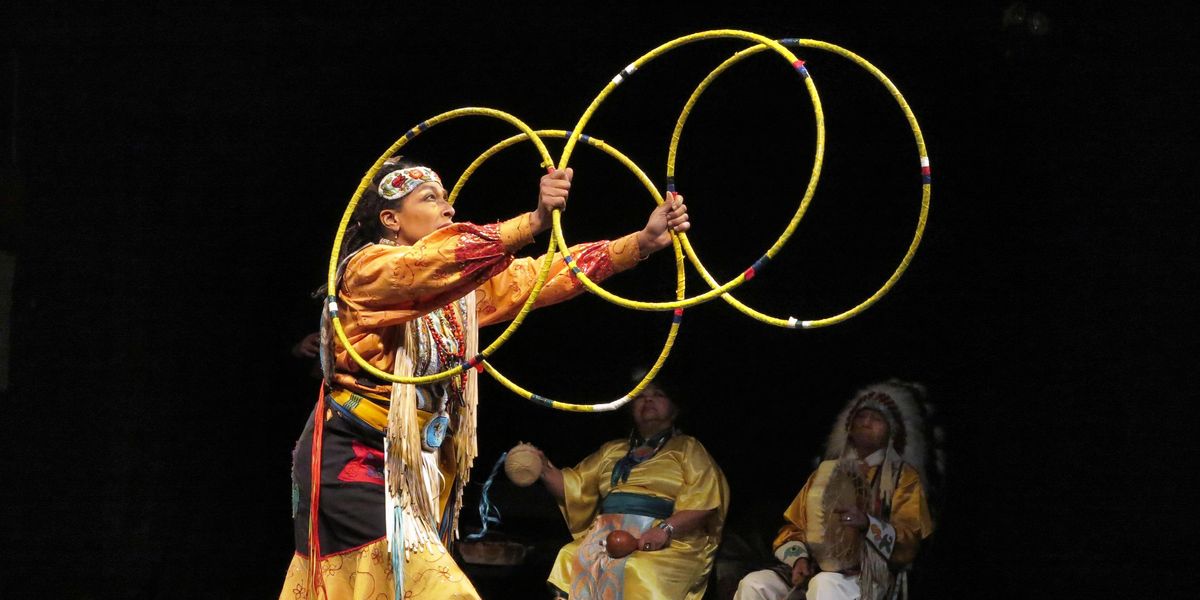How One Native American Dance Troupe Is Holding On to Its Heritage Amid Uncertain Times
In Native American culture, the powwow is a beloved tradition that serves as a reunion and opportunity for Indigenous tribes to gather and celebrate their cultures. In short, it is the antithesis of COVID-19 restrictions.
In spite of this challenge, the 46th-annual Thunderbird American Indian Dancers Pow Wow and Dance Concert will be held February 20 at New York City’s Theater for the New City, with the audience tuning in from home.
“Even though we’re working under a very different kind of condition, we want to maintain the tradition of being at the theater,” says Louis Mofsie, the troupe’s artistic director and co-founder, and a member of the Hopi and Winnebago tribes.

Lee Wexler, Courtesy Jonathan Slaff & Associates
Preserving the Meaning of the Movement
The powwow will include storytelling and social dances from various tribes, including the hoop dance, deer dance, grass dance, jingle dress dance, shawl dance, fancy dance, robin dance and smoke dance.
Each dance in the concert has a unique story or purpose. Some, such as the robin dance, use movements that imitate animals. To the Iroquois, robins symbolize the arrival of spring, so the dancers mimic the small hops done by robins when they are on the ground.
To make the powwow a learning opportunity as well as a performance, Mofsie says the group also explains the cultural significance of each dance and what the movements represent.
“Stereotypes have been presented for so many years about Native people and their dancing, so we feel it’s very important that people get an understanding of what they’re seeing,” he says.
Embracing Heritage and History
The Thunderbird American Indian Dancers is the oldest resident Native American dance company in New York. It was founded in 1963 by a group of 10 New Yorkers who were descendants of the Mohawk, Hopi, Winnebago and San Blas tribes.
Since retiring, after working as an educator for 35 years, Mofsie has placed his full attention on Thunderbird and spreading its purpose.
“You can feel the power of dances,” he says. “We’re passing on our heritage. It’s something that has been with us spiritually from the very beginning, and we still feel that.”

Lee Wexler, Courtesy Jonathan Slaff & Associates
Ticket Sales Go to a Special Cause
As is traditional for the event, box-office revenue will go toward the Thunderbird American Indian Dancers Scholarship Fund to help Native Americans attend college.
Mofsie says the fund was created in 1963 to address the challenges faced by young Native Americans who wanted to attend college but received limited federal funding if they lived in urban areas, like New York City, rather than on reservations. Since the fund’s inception, the group has awarded more than 350 scholarships.
A Long-Lasting Community Partnership
The troupe’s relationship with Theater for the New City dates back to 1975, after Mofsie met its director, Crystal Field, while she was briefly living on a Hopi reservation as research for a play. Although the COVID-19 pandemic has created challenges for both organizations, their 46-year partnership has held strong.
“There’s no question that people are dying to perform,” Field says. “What is an artist when they are not working? That’s their life.”
The powwow’s livestream will be available starting February 20 at 7 pm Eastern on the theater’s website. Tickets can be purchased for $5, and the performance will remain available to stream on demand until March 7.




